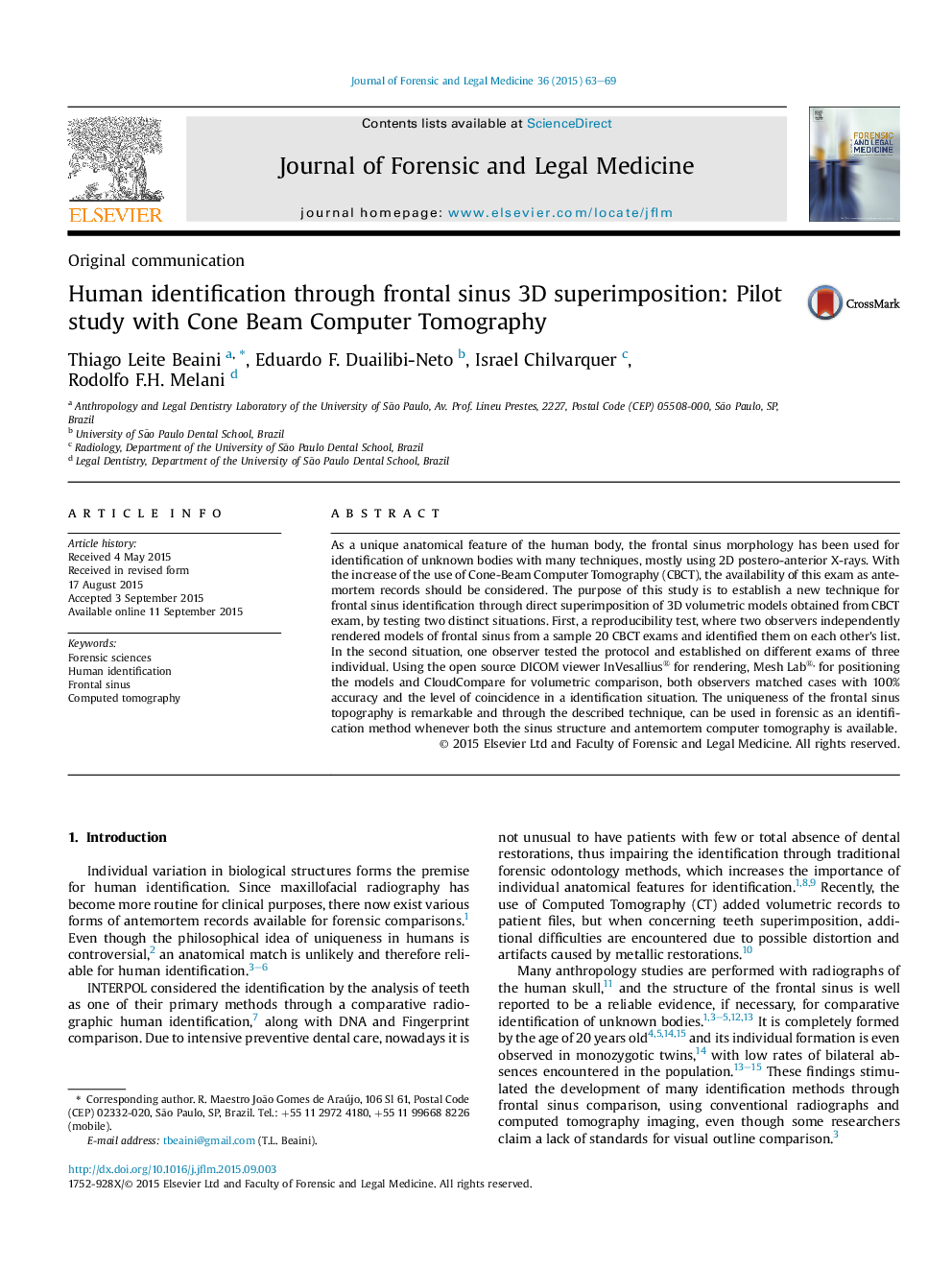| کد مقاله | کد نشریه | سال انتشار | مقاله انگلیسی | نسخه تمام متن |
|---|---|---|---|---|
| 101673 | 161288 | 2015 | 7 صفحه PDF | دانلود رایگان |
• Pilot Study.
• Human identification with 3D Frontal sinus models, from CBCT exams.
• Detailed description of the method for future investigation.
• Open-source software.
• High level of success, graph form quantification of similarity.
As a unique anatomical feature of the human body, the frontal sinus morphology has been used for identification of unknown bodies with many techniques, mostly using 2D postero-anterior X-rays. With the increase of the use of Cone-Beam Computer Tomography (CBCT), the availability of this exam as ante-mortem records should be considered. The purpose of this study is to establish a new technique for frontal sinus identification through direct superimposition of 3D volumetric models obtained from CBCT exam, by testing two distinct situations. First, a reproducibility test, where two observers independently rendered models of frontal sinus from a sample 20 CBCT exams and identified them on each other's list. In the second situation, one observer tested the protocol and established on different exams of three individual. Using the open source DICOM viewer InVesallius® for rendering, Mesh Lab®, for positioning the models and CloudCompare for volumetric comparison, both observers matched cases with 100% accuracy and the level of coincidence in a identification situation. The uniqueness of the frontal sinus topography is remarkable and through the described technique, can be used in forensic as an identification method whenever both the sinus structure and antemortem computer tomography is available.
Journal: Journal of Forensic and Legal Medicine - Volume 36, November 2015, Pages 63–69
